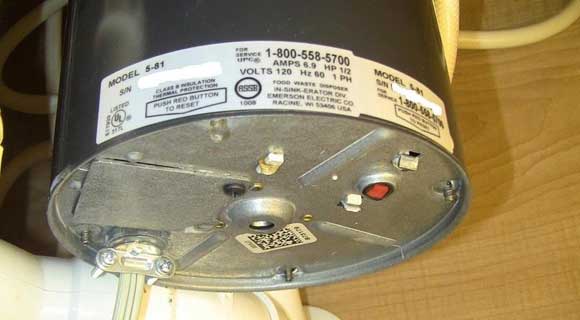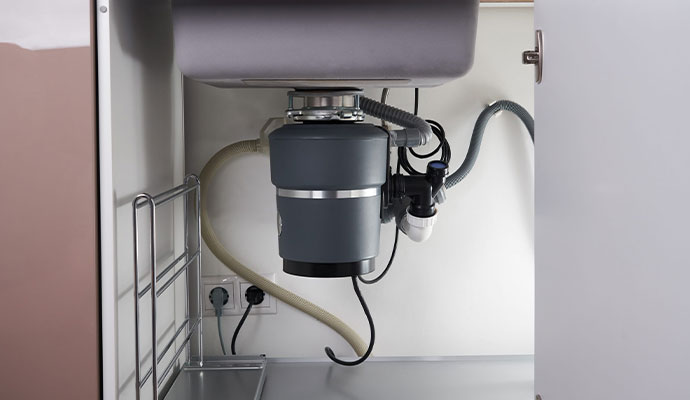This article down below involving The Handy Guide To Fixing Your Garbage Disposal Leaking is really engaging. You should read it.

Garbage disposals are crucial cooking area home appliances that aid in disposing of food waste efficiently. However, a dripping garbage disposal can be a frustrating and untidy trouble to take care of. Fortunately, numerous leaks can be taken care of quickly with a couple of easy steps. In this post, we will certainly talk about just how to take care of a leaking garbage disposal properly.
Intro
Garbage disposals are installed under kitchen sinks and are developed to shred food waste right into smaller pieces, permitting it to go through the pipes system conveniently. While these devices are typically dependable, leakages can happen over time due to wear and tear, loose links, or damages to the device.
Usual Sources Of Leaks in Rubbish Disposals
Worn Seals and Gaskets
Seals and gaskets play a vital function in protecting against water from dripping out of the waste disposal unit. With time, these elements can weaken, bring about leaks around the disposal device.
Loose Links
The connections in between the waste disposal unit and the pipes system can end up being loosened over time, creating water to leak out during operation.
Cracks or Holes in the Disposal Unit
Physical damage to the waste disposal unit, such as cracks or holes in the real estate, can also lead to leakages.
Recognizing the Source of the Leakage
Before attempting to deal with a leaking waste disposal unit, it is vital to recognize the resource of the leak. This can generally be done with aesthetic assessment or by carrying out simple examinations.
Visual Assessment
Check the waste disposal unit device meticulously for any indications of water leakage. Pay attention to areas around seals, gaskets, and link points.
Evaluating for Leakages
One means to examine for leaks is by running water through the disposal unit and checking for any type of noticeable indications of leak.
Tools and Materials Needed for Repairing a Dripping Garbage Disposal
Prior to starting the repair procedure, collect the essential tools and materials, consisting of a screwdriver, adjustable wrench, plumbing technician's putty, replacement seals or gaskets, and epoxy or patching product for repairing splits or openings.
Step-by-Step Overview to Repairing a Leaking Waste Disposal Unit
Turn Off the Power
Before attempting any fixings, make sure that the power to the garbage disposal device is switched off to prevent the danger of electrical shock.
Situate the Leak
Identify the specific area of the leak and determine the reason.
Tighten up Connections
Use a wrench to tighten up any kind of loosened links between the disposal system and the pipes system.
Replace Seals or Gaskets
If the leakage results from worn seals or gaskets, eliminate the old elements and change them with brand-new ones.
Patching Fractures or Openings
For cracks or openings in the disposal system, use epoxy or an appropriate patching product to secure the broken area.
Testing the Garbage Disposal After Repair Work
As soon as the repair work is total, evaluate the garbage disposal by running water via it to make sure that the leakage has been dealt with.
Preventive Maintenance Tips to Prevent Future Leakages
To prevent future leaks, it is necessary to execute regular maintenance on your waste disposal unit. This includes maintaining it clean, preventing placing non-food items or difficult things down the disposal, and occasionally looking for leakages or various other concerns.
Verdict
In conclusion, repairing a leaking waste disposal unit is a fairly simple procedure that can be finished with standard tools and materials. By adhering to the actions laid out in this write-up and exercising precautionary upkeep, you can keep your garbage disposal in good working condition and prevent costly repair work in the future.
What to Do About a Leaking Garbage Disposal
A leaking garbage disposal often goes unnoticed until you confront a sopping cabinet, a foul-smelling puddle, or an audible drip-drip-drip from the unit. The fix can be frustrating, too, because the leak can stem from a number of components in the system. Fortunately, with a little sleuthing, you can zero in on the leak and—depending on the exact location—stop the icky oozing and repair the component that caused it. Worst case scenario, if it turns out that the garbage disposal must be replaced, installing a new one is a reasonable do-it-yourself task for those with basic plumbing skills. Read on to keep the cash you’d otherwise hand over to a pro.
Prepare to find the leak
Prior to testing the garbage disposal for leaks, unplug it at the wall outlet and turn off the power from the breaker box to prevent electrical shock. Then insert a watertight sink stopper into your sink drain and wipe the unit dry with a clean cloth. In any handy container, mix a few drops of food coloring into a few cups of water, and pour the dyed water onto the sink stopper to help you locate the leak.
Investigate the source
the top, where the disposal meets the sink drain the side, where the dishwasher hose or main drain pipe connects to the disposal or the bottom of the unit Inspect each of these locations while gliding a light-colored rag over the unit; the dyed water will readily show on the rag and reveal the location of the leak. If a leak isn’t immediately apparent, remove the sink stopper and pour a few more cups of dyed water down the sink drain, then check for leaks again. Leaks near the top of the unit are more likely to show themselves while the sink is plugged, while side and bottom leaks are more noticeable while the sink is unplugged.
The metal sink flange that sits directly inside the sink drain is typically sealed around the top with plumber’s putty (a clay-like sealant) and then secured from under the sink with bolts. If the plumber’s putty deteriorates, or the bolts loosen, the flange can no longer form a watertight seal between the sink drain and the disposal—which could cause a leak at the top of the unit.
To reseal the leaky flange, you must first detach the garbage disposal. Start by loosening the screws securing the main drain pipe to the disposal, then loosen the screws in the metal clamp securing the dishwasher hose to the disposal and detach the drain pipe and dishwasher hose from the disposal. Loosen the screws in the mounting ring that connects the disposal to the metal mounting assembly beneath the sink, then pull down the disposal and carefully set it on a clean, dry surface. Loosen the bolts in the mounting assembly with a wrench, then pull down the mounting assembly and set it near the disposal.

Do you like reading up on Tips on Fixing a Leaking Garbage Disposal? Make a remark directly below. We'd be pleased to see your responses about this write up. We hope to see you back again soon. Sharing is nice. Helping others is fun. Thanks for your time. Visit us again soon.
Give Me A Quote!